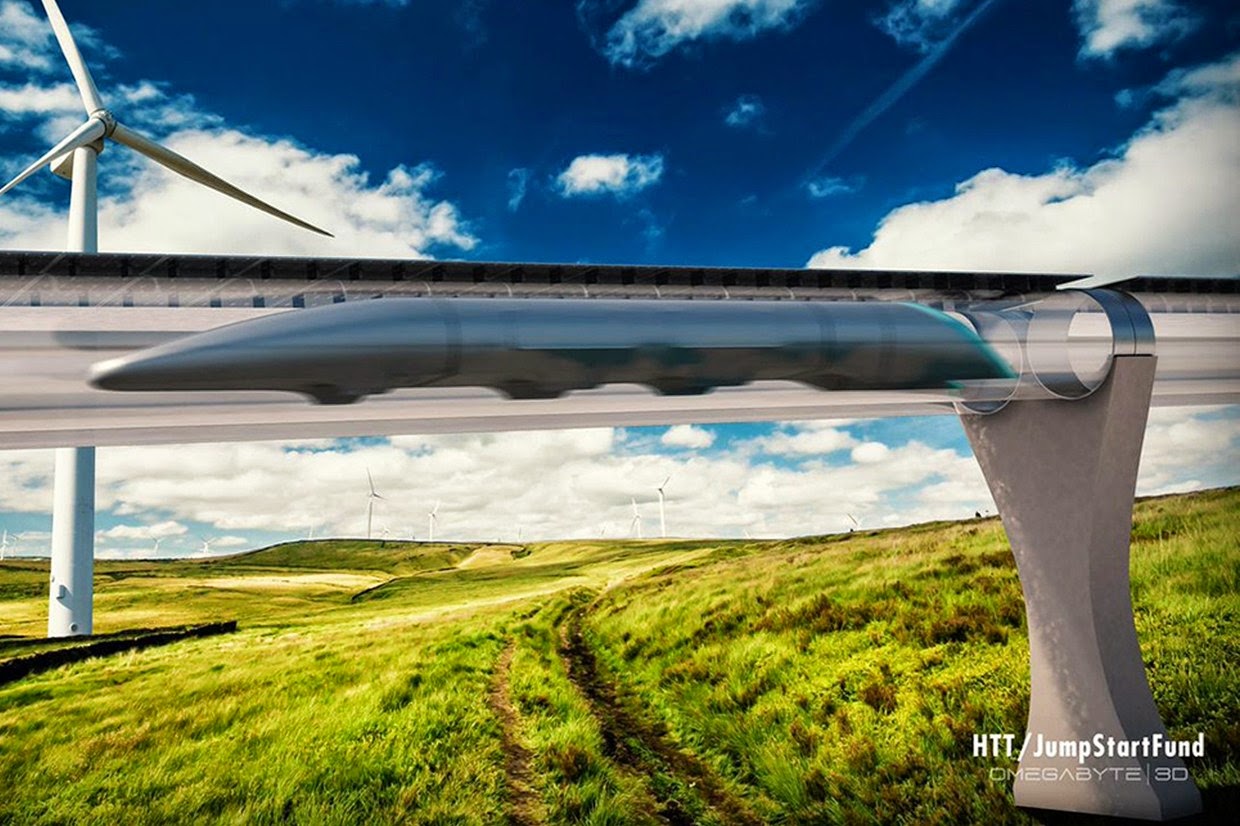The crowdsourced firm has around 100 engineers on the projects, and nearly all of them have day jobs at companies like Boeing, NASA, Yahoo!, Airbus, SpaceX, and Salesforce.
The developers estimate an up-and-running Hyperloop can built in just 10 years.
They are using Jumpstartfund to incubate the company and publish a new crowdstorm document. JumpStartFund is a crowd-powered incubator that allows entrepreneurs to build communities of experienced professionals around their projects. Both an equity and rewards-based crowd platform, JumpStartFund helps startup companies and a wide variety of projects. Using the disruptive power of the crowd to vote, comment and contribute on ideas in development, the platform is designed to help create companies that might not have been. Founding members have been part of the Girvan Institute of Technology, a non-profit, public benefit corporation chartered to facilitate the transfer, development and commercialization of technologies, and to foster the growth of early-stage high-tech companies. JumpStartFund’s primary mission is to help both entrepreneurs and investors leverage the power of the Internet to make it easier for companies to succeed.
Hyperloop Transportation Technologies is a company formed to design and eventually build the fanciful transportation system envisioned by Tesla and SpaceX CEO Elon Musk HTT/Jumpstartfund
Route
Pick a different route than LA to San Francisco. Los Angeles to Las Vegas is being considered, as are other parts of the US and the world.
The Capsules
The team had to make a few changes to the capsules Musk proposed. The Tesla CEO suggested doors that would open upward, but Ahlborn says that’s hard to do, since the low-pressure environment of the tube requires fairly heavy doors. So the team decided on what it calls a “bubble strategy.” There’s the swanky capsule, the one with fancy doors and windows, that pulls into the station. It’s the “bubble.” Passengers get in, and that capsule enters an outer shell as it’s loaded into the tube. The outer shell is built to handle the ride, and has the air compressor and other needed bits.
The Stations
As the UCLA students imagine it, a passenger would arrive at a station and drop her luggage off with a Kiva robot (the kind Amazon uses in its warehouse). She would pass through security on what seems to be a moving sidewalk going under a metal detector, an idea that sounds tricky when you consider how often people in airports forget to take coins or various terrifying objects out of their pockets. But once through, she would be able to kill time in the lobby doing some shopping, grabbing a bite, using the bathroom, or renting a tablet for the trip. Then she heads to her platform, gets in her assigned seat, and is whisked away.
They have built some physical models
SOURCES – JumpstartFund, MSNBC, Daily Mail, Wired, Mashable

Brian Wang is a Futurist Thought Leader and a popular Science blogger with 1 million readers per month. His blog Nextbigfuture.com is ranked #1 Science News Blog. It covers many disruptive technology and trends including Space, Robotics, Artificial Intelligence, Medicine, Anti-aging Biotechnology, and Nanotechnology.
Known for identifying cutting edge technologies, he is currently a Co-Founder of a startup and fundraiser for high potential early-stage companies. He is the Head of Research for Allocations for deep technology investments and an Angel Investor at Space Angels.
A frequent speaker at corporations, he has been a TEDx speaker, a Singularity University speaker and guest at numerous interviews for radio and podcasts. He is open to public speaking and advising engagements.







